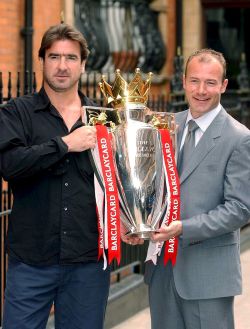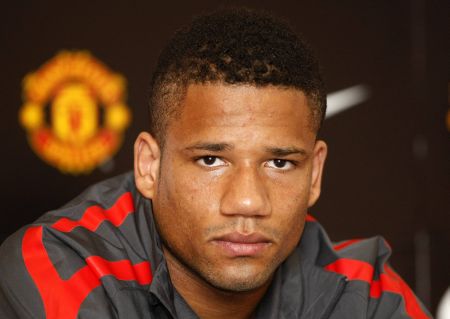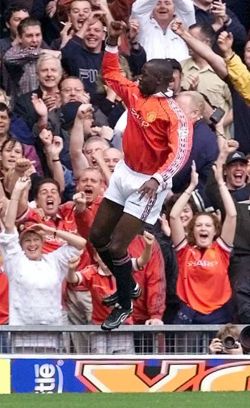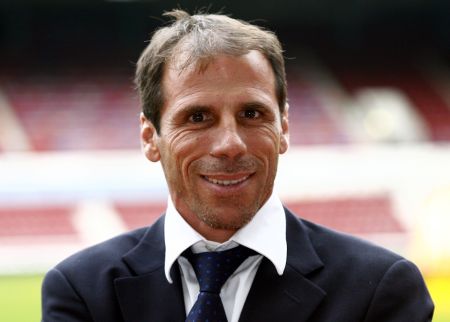To be honest, I’ve never been a fan of the transfer window system.
Thanks to it, we’ve been deprived of the exciting days of whirlwind transfers, when players like Eric Cantona or Gianfranco Zola could be brought in to rejuvenate the club, thrill the fans and spice up the title race any time during the season.

Cantona got his chance to become the Premier League's foreign player of the decade thanks to a mid-season transfer from Leeds United to Manchester United. Transfers like that can't happen now (except for four-weeks in January) with the transfer window system.
Of course, the transfer window wasn’t implemented by FIFA just to take that joy away from us. The window limits player transfers to two periods in a year (a maximum 12-week window at the end of each domestic season and a four-week window in mid-season) with the main reason presumably to avoid clubs with a lot of money from buying players any time they wanted to and creating an unfair advantage.
It was a good idea, but in practice, it seems the transfer window has created more problems than it has solved since it first came about in 2002, and it has actually worked in favour of bigger clubs.
Several Premier League managers have voiced their disapproval over the last few years, and though they seem to have come to terms with it, the problems still remain.
Former Reading manager Steve Coppell’s assertion in 2008 that the system creates a “fire-sale mentality” is proved right on every transfer deadline day, including the most recent one last week where as usual, there was a glut of signings on the last day of the window.
It makes for great entertainment every time, with all the rumours flying around about who’s going where; but ask the managers who are having to rush those signings, putting their jobs and reputations on the line because of the deadline, and they’ll probably tell you it’s not as fun as it looks.
Managers are being forced by the transfer window to put all their eggs in one basket at the beginning of every season. They can’t afford not to sign anyone, because every squad in the Premier League needs to constantly improve to be competitive, and yet they can’t wait around until the right player comes along because of the deadline so in the end you get clubs being forced to invest millions of pounds in players just in case.
The pressure that Premier League managers operate under is just ridiculous, as sporting failure can lead to serious financial consequences, and the transfer window doesn’t make it any easier.
League Managers’ Association vice-chairman Frank Clark, said a couple of years ago: “Most of our members are against the transfer window, and the whole principle of it. It makes things very difficult. If things are not going well in October and November, you can’t get in the transfer market to give the team a lift. So it’s easier to change the manager.”

So that's what Bebe looks like... Well we all know as much about him now as Sir Alex did when he signed him.
Managers like Alex Ferguson might have the luxury of paying millions for players like Bebe that he hasn’t even seen on TV, but other managers are putting their jobs on the line with every million they spend.
And though the big clubs’ spending is curbed somewhat by the transfer window, so has it been for the other clubs, for whom that flexibility to spend is arguably more important.
For example, if Chelsea lost a key player like Frank Lampard to injury, they would have John Obi Mikel, Michael Essien and now Ramires to stand in.
But if West Ham United were to lose Scott Parker, they would have no-one else to replace him. A club like them would need that flexibility to move for players in the event of injuries much more than big clubs.
Plus, the new Premier League squad rules makes the transfer window even more redundant, as clubs can only register a maximum of 25 players. Even if there was no transfer window, big clubs can’t go out and buy players every other month anymore. But for the other clubs, being able to sign just one or two players throughout the season could make all the difference – assuming they still have space in their squad.
This lack of flexibility in the market also hampers clubs financially, as former Bolton Wanderers manager Gary Megson pointed out: “I have been on the other side of the coin, at Stockport, where money is tight. Where do you get your money from when you cannot sell someone until January?” he said.
And it’s not just the clubs that suffer. This season alone, players like Roque Santa Cruz, Robbie Keane and Mark Schwarzer have failed to secure moves before the transfer deadline.

Keane is a full international with the Republic of Ireland, but thanks to the transfer window deadline, he'll have to settle for a spot on the bench at Tottenham.
Had there been no deadline, their respective transfers would surely be still in the works now.
Instead, Keane would have to spend one of the most crucial years of his career on the bench, Schwarzer has missed out on what could’ve been his last chance to move to a major club, and Santa Cruz might end up not playing any football at all until the next transfer window in January.
Of course, there are advantages to the system too. But at the moment, especially with the new squad rules, it seems the disadvantages far outweigh them.
[FYI, professional sports leagues in America like the NBA and NHL have their “trade deadlines” too, but the deadlines are usually well into their regular seasons, and most leagues allow trading again before the playoffs. That means their system is sort of the opposite of football – they can trade players for most of the season, and there’re just a few short periods where trading is not allowed. They’re different sports, I know, but I don’t see why the transfer systems should be different.]
******************
Famous mid-season transfers
Before the transfer window came around, these players were able to make history thanks to mid-season moves:
Eric Cantona, Leeds United to Manchester United, November 1992

He was a talented troublemaker in Leeds, but after a mid-season transfer to Manchester United, he became a legend.
Arguably the most famous, and most successful, mid-season transfer of all time. Struggling in the first half of the title race, Cantona came in and delivered the title with ten-points to spare.
Andy Cole, Newcastle United to Manchester United, January 1995

Cole was a god in Newcastle, so his mid-season transfer to title rivals Manchester United came as a real shocker.
The transfer came as a huge shock. Cole was a hero in Newcastle after scoring 34 goals in 40 games the season before, but then-Newcastle manager Kevin Keegan explained he wanted to use the money to sign Les Ferdinand.
Faustino Asprilla, Parma to Newcastle United, February 1996
The Columbian forward was talented but overly flamboyant off the pitch. He never lived up to his own hype, and was sold back to Parma less than three years later, also in mid-season.
Gianfranco Zola (pic), Parma to Chelsea, Novenmber 1996

Before he took over the reins at West Ham United (and got the sack), Zola was a hero at their London rivals Chelsea. He will always be remembered as one of the most successful foreign imports in Premier League history.
Funnily enough, it was then-Parma manager Carlo Ancelotti who sold Zola to Chelsea. The diminutive Italian was a huge hit in the Premier League, and Ancelotti recently admitted he had made a mistake selling him.
Jurgen Klinsmann, Sampdoria to Tottenham Hotspur, December 1997

The legendary Germany striker (and coach later on) made a dramatic return to Spurs mid-way through a season where they were facing relegation.
It was Klinsmann’s second stint at the club, and his last club before retiring. Spurs were battling relegation, and his goals helped them avoid the drop.

Tell us what you think!